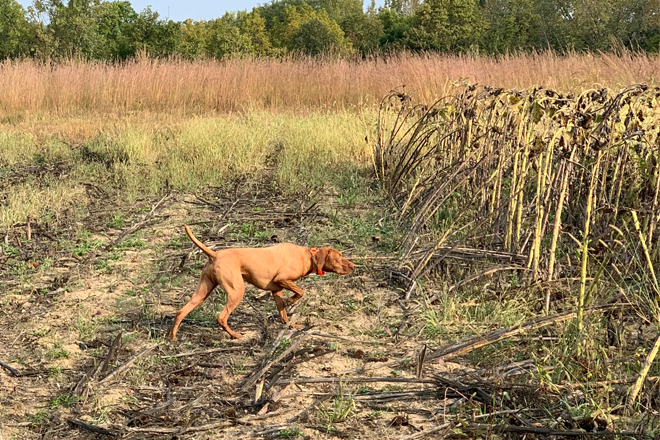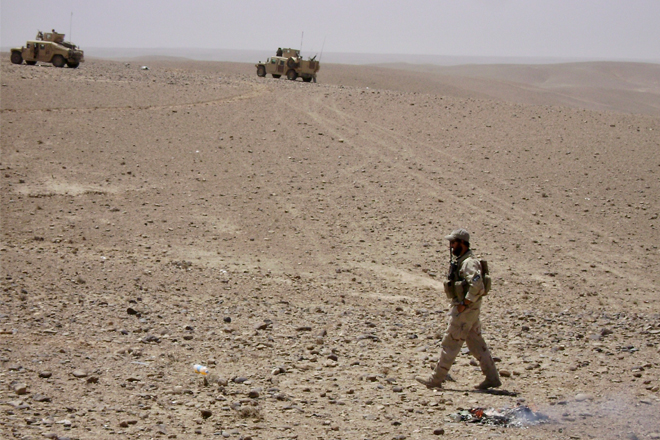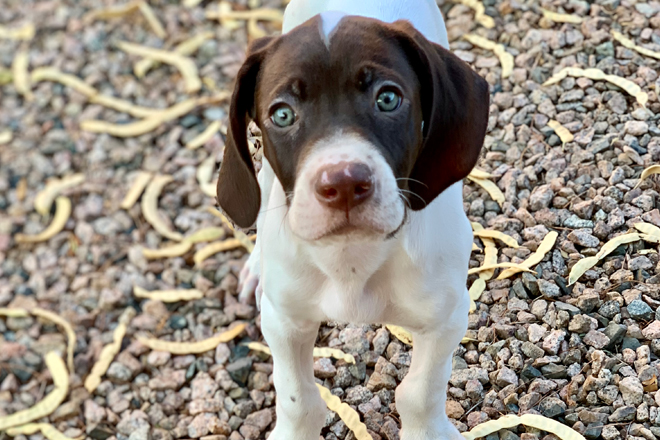
One hunter's story on finding peace in the uplands
Story and photos by David Gutierrez
My journey into the uplands began in January of 2016 after 12 years of military and government service. I had just finished my final Afghanistan deployment and had returned home to Iowa for school. I was restless and spent my time, energy, and money trying to snuff out the frustration I felt as I stumbled back into civilian life. I packed my schedule with menial tasks and questionable coping mechanisms to stave off trouble, with mixed results.
My best friend, Ross, suggested I buy a compound bow and join him for the Iowa deer season. For much of Ross’s life, hunting had served as a healthy outlet—a chance to escape into the woods to chase turkey and deer. He thought it might be a healthy escape for me, too. Ross had all the logistics taken care of—land use agreements with farmers, tree stands and blinds—my only obligation was to learn how to shoot.
I liked the rhythm of archery: the soothing whine of the draw stroke as the arrow scraped its rest; the slap of the string against its damper; the hollow thump when the arrow hit its mark. A slight break in concentration and I missed the target. For a few seconds before each shot, my mind cleared of its noise.
Ross and I spent most of the fall in tree stands and ground blinds on farms and public lands. I killed a young buck and learned to butcher under the tutelage of Ross’s father. I learned the finer points of making ground venison while washing down handfuls of wild turkey nuggets with beer. I don’t know how much time or money I spent chasing deer that first season, and I don’t care. Those days in the field were the most at peace I had felt in years.
A bird dog was inevitable. I bought a Vizsla pup I named Murphy during my first year of graduate school at Michigan. He arrived in December of 2017. We were similar, Murphy and me: stubborn, occasionally destructive, and both lacking an emotional middle ground.
I felt an obligation to Murphy—more than I did to most people, or even myself—that compelled me to provide him a life filled with birds. The following summer, I sent Murphy away for a month of training. I took shooting lessons at a nearby clay course so as not to embarrass myself in front of the dog.
 Murphy on point
Murphy on point
I took a conservative approach during the 2018 season, hunting a handful of preserves in Michigan while I learned to read Murphy’s mannerisms. A high tail and staunch dog meant birds. A flat tail with a creep meant old scent or a bird on the run. A staunch point with a drooped tail meant something with fur. I also learned I had a habit of shooting early, clipping a few-too-many tail feathers and watching $25 birds fly away.
But I was hooked—no question—and wholeheartedly impressed with what a bird dog could do. Jealous, even, to see an animal whose life’s purpose was so clearly defined.
In 2019, I planned a month-long hunting trip: Montana for sharp-tails and Huns; South Dakota and Iowa for pheasants and quail. I’d explore the country, test my planning, scouting, and hunting skills, and finally get my dog on wild birds.
The first week in Montana was kind to us with birds and well-taken shots. Then our beginner’s luck ran out. Coveys bumped when I closed the car door. I missed handfuls of simple shots. Grouse dinners soon became take out or burgers cooked on the camp stove, and for days it seemed I only filled my vest with empty shotgun shells.
We continued west toward Malta, then south toward Lewistown and Bozeman, stopping to hunt and camp along the way. I saw my first herds of pronghorn, mule deer, and elk. I learned my tent didn’t hold up to 40 mph gusts and that October was a transitional month for Montana’s weather, where sunny and 60 changed quickly to snowstorms and 10 degrees. On the first cold night, I learned my two-person sleeping bag comfortably fit my dog and me.
We left Montana to bag our first South Dakota rooster on a walk-in area east of Aberdeen. In Iowa, we hunted with an old high school buddy on his in-law’s property, where we took our first bobwhite quail. In early November, Murphy and I returned to Michigan, exhausted. I had meant to keep a detailed record of our hunts, but in the blur of our adventures, I’d lost track of the days.
I moved to central Arizona in November of 2020 to take a job as a Regional Field Representative with Pheasants Forever and Quail Forever. Murphy and I continued hunting and camping out of the car, often solo, but also with members of the local chapter who were more-than gracious in taking the new field rep under their wing.
I fell short of an Arizona quail slam my first season, missing birds from two Mearns’ coveys that flushed at my feet. We learned hard lessons about cacti, and I started carrying pliers and tweezers to pluck the needles from my shins and Murphy’s paws. I traded my soccer mom SUV for a truck I’ve since turned into a dog hauler, mobile workstation, and apartment on wheels.
 Serving in Afghanistan
Serving in Afghanistan
I spent much of my twenties in the rocky deserts of Helmand Province, Afghanistan, living, working, and sleeping out of a modified, safari-style truck. There were gunfights and sleepless nights. Hours of boredom between raids. Laughter with friends and teammates, some of whom never came home. I miss those days, and yet I don’t. I’ve spent much of the last six years increasing the distance between my old life and me. I sold, tossed, or gave away my old uniforms and gear. I left my awards and medals with my mother, as she worried I’d throw them away. I’m not bitter about my time in the army, I just didn’t know how to quiet my past experiences well enough to live a life that felt peaceful and good.
But that’s changing. Now, I don’t mind when old patterns and processes emerge. I spend my free time exploring the west in a truck similar to those our Afghan militia used. The Principles of Patrolling (planning, reconnaissance, security, control, and common sense) work just as well for camping, working dogs, and chasing birds.
This year, we’ll expand our adventures. I recently added an English pointer pup named Ozzy to our team. I’m fortunate I can take my dogs with me while visiting chapters, and that hunting is often a core component of our outreach work.
 Ozzy the pointer
Ozzy the pointer
My favorite part of the hunt is the halfway point, where we stop for water and rest. I try to pick a location with some shade and a view. It’s this moment of solitude and insignificance I’ve been chasing; to feel as if the massive landscape has swallowed me whole. I wait, sometimes 20 minutes, sometimes more, as the world settles around me. I take in the peace and quiet of the oak savannahs, the desert grasslands, or the mountainsides.
Once, I wasn’t certain I’d live past the age of 25. Now, I hope to grow old exploring the uplands. I’ll fill the coming decades with more dogs and miles under foot. We’ll camp beneath the stars and wake to cold, crisp mornings. We’ll carve out a tiny space among the wildlife and quietly claim it as our own.
Listen to On The Wing Podcast Ep. 126 to hear more on David’s story as part of this month’s Path to the Uplands content series presented by ALPS OutdoorZ.
David Gutierrez was born in Iowa and served as a member of the U.S. Army Special Forces (Green Berets). He is the Regional Field Representative for Pheasants Forever and Quail Forever in Arizona, California, Nevada, New Mexico, and Hawaii